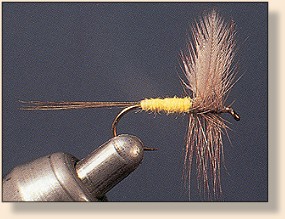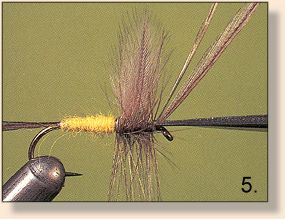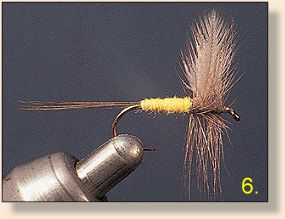Pale Evening Dun
By Skip Morris, Washington
The Pale Evening Dun artificial, predictably, imitates
the mayfly commonly called the pale evening dun. Another
common ame for this mayfly, known to entomologists as
Ephemerella dorothea, is the sulphur dun.
The pale-evening-dun hatch is important in the East. These
little mayflies hatch from mid-May to early July, and the
hatch shifts gradually from midday to twilight as the days
warm into summer. Look for pale evening duns in swift runs
and riffles. There is a western mayfly called a pale evening
dun, but it's an entirely different insect than the one we
focus on here.
Hackle-tip wings, like those on the Pale Evening Dun, are
fairly common on traditional trout flies; you will also find
them on the ubiquitous Adams. The best feathers that I have
found for these wings are the hackle from a hen neck.
Materials: Pale Evening Dun
Hook: Standard dry fly, sizes 18 and 16 (the hook shown is
a Daichii 1180).Thread: Yellow 8/0 or 6/0.
Wings: Blue-dun hackle fibers.
Body: Pale-yellow dubbing.
Hackle: Blue-dun.
Tying Steps:
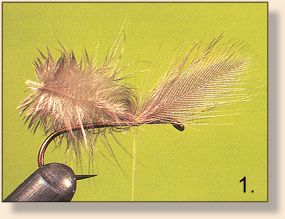
1. Pluck two hackles from a hen nect and hold them so their tips curve away from
one another. Measure them against the hook, and then use the pinch to tie them
in as wings, about three-quarters up the shank.
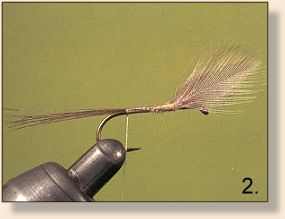
2. Snip the butts of the hen hackles at an angle and bind
them under thread turns. Strip some hackle fibers, measure them,
and use the pinch to tie them in as a tail.
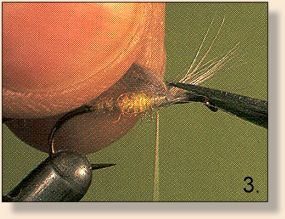
3. Dub a tapered body to just past midshank. Draw the wings firmly up,
and then back, and then trim away the fibers projecting forward from the
wing's base. Crease the wings at their base with your thumb nail.
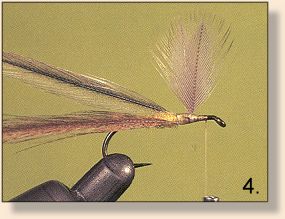 |

